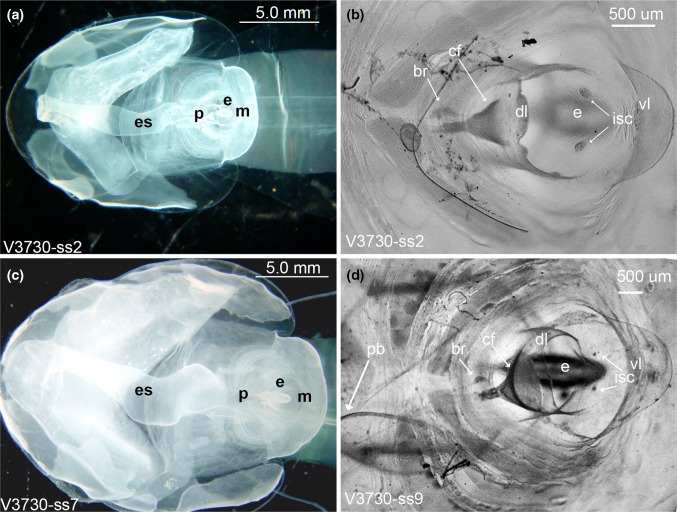Fig. 4.
Dorsal views of B. stygius (top row, a, b) and B. mcnutti sp. nov. (bottom row, c, d). In B. mcnutti, the pharynx (p) is broad and the esophagus (es) appears distinctly kinked (c). Both structures are more slender in B. stygius, and the esophagus is almost tubular (a). To accommodate the bulkier pharynx, the endostyle (e) of B. mcnutti is pushed down, closer to the floor of the trunk. Its more horizontal aspect makes the endostyle of B. mcnutti appear elongate in comparison with B. stygius when viewed from above or below. In both species, the ventral lip (vl) is pronounced (b, d). The dorsal lip (dl) of B. mcnutti is generally smooth and uniform (d), while that of B. stygius usually looks more scalloped, due in part to the presence of densely packed cells at its apex (b). These same cells are less conspicuous in B. mcnutti and may be absent, entirely (d). The ciliated funnel (cf) of B. mcnutti (d) is typically more pronounced than that of B. stygius (b) because it is usually larger relative to the mouth (m). The inner sensory cells (isc) lie just below the ventral lip and in B. mcnutti (d) are small relative to B. stygius (b) of similar size and may be absent. Specimen identification numbers begin with “V” for the ROV Ventana and are followed by the dive number. In plate (b) a fiber is attached to the trunk and is not part of the specimen

